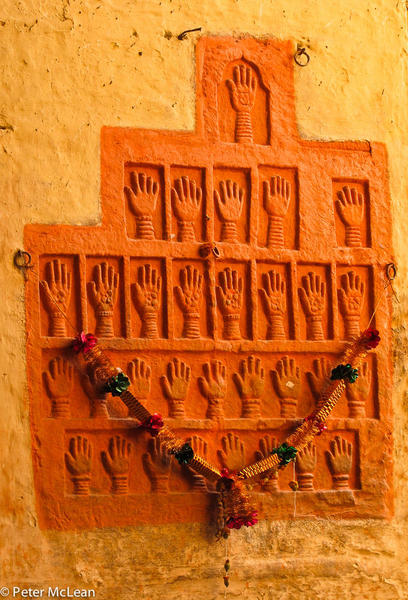One of the saddest sights that I have experienced in my travels is to be seen at the “Iron Gate” (Loha Pol) of the massive Mehrangarh Fort in Jodhpur in Rajasthan, India. Here, there is a painted and garlanded panel where 15 small hand prints were made by the wives of the Maharaja as they left the fort and went towards his funeral pyre where they immolated themselves following his death. Known as Sati marks, these gilded hand prints most likely date back to the 1843, the year of the death of Maharaja Man Singh.
The custom of sati has ancient origins in the Hindu faith and was practiced widely in the Rajasthan area. Wives were dressed in wedding finery to join their husbands in a fiery death as an act of devotion and faith, usually within a day of his death. In 1731, following the death of Maharaja Ajit Singh six wives and fifty-eight concubines placed themselves in the funeral fires.

The act of Sati was prohibited by law by the British Colonial rulers in India in 1829 but, despite this ban and efforts at repression of the strong tradition, there were still reported cases in Jaipur as late as 1987.


Comments (2)